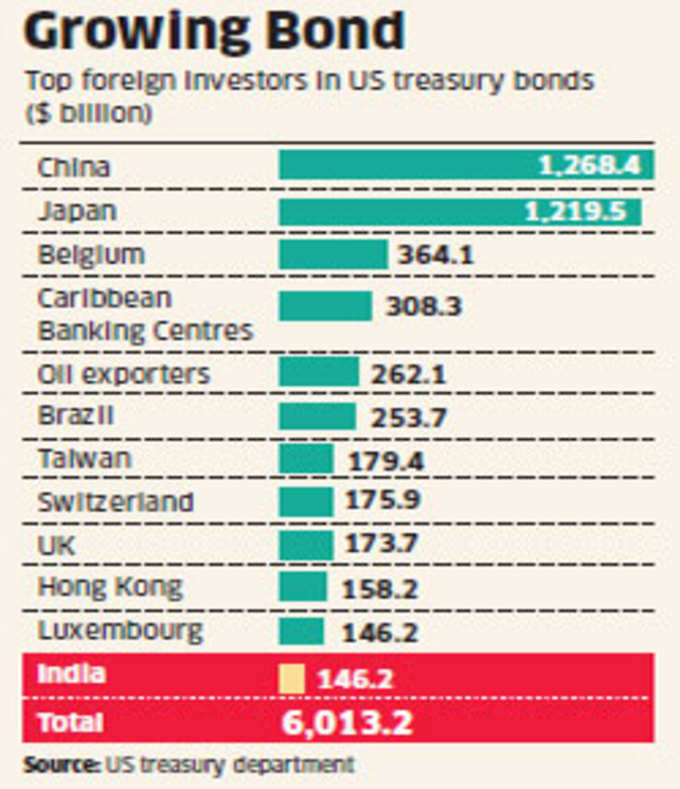MUMBAI: India is now among the 16 top lenders to the
United States, with its investments in the
US government bonds hitting a new high in June at $73 billion.
Indian investors — predominantly the Reserve
Bank of India — have increased exposure to US treasury securities by 19 per cent over the past year, according to data released by the
US treasury department. India has now lent more than developed countries such as Canada, Germany or France to the world’s most powerful
economy.
“The rise of India’s
forex holdings in US treasuries makes sense on various counts,” said Saugata Bhattacharya, chief economist at the
Axis Bank. “First, the bulk of our forex holdings are in US dollars. Second, RBI is probably replenishing some US securities holdings it would have depleted when it was selling US securities while intervening in forex markets last year in defending the
rupee,” he said.

Bhattacharya also said the investments may get higher yields, given that the US is likely to be the first major country to raise rates in 2015. More importantly, it is perceived to be a safe haven, particularly with the US economy now back on track. A treasury official with a private bank said yields on other major sovereign papers like Japan and Euro area have remained low, making US government paper more attractive.
India now accounts 1.2 per cent of total foreign investments in US bonds of about $6 trillion. The country also received more dollar inflows during June, which the central bank mopped up from the market. About a fifth of India’s
foreign exchange reserves of close to $320 billion is now parked in US government bonds.
As a custodian of the country’s
foreign exchange reserves, the central bank deploys the reserves in the overseas markets and earns a return on them. It parks its reserves mostly as deposits with other central banks and also with commercial banks of top-rated economies besides investing in their sovereign paper.
The investment decision is not guided by a profit motive, but by concerns on safety and liquidity.
 Bhattacharya also said the investments may get higher yields, given that the US is likely to be the first major country to raise rates in 2015. More importantly, it is perceived to be a safe haven, particularly with the US economy now back on track. A treasury official with a private bank said yields on other major sovereign papers like Japan and Euro area have remained low, making US government paper more attractive.
Bhattacharya also said the investments may get higher yields, given that the US is likely to be the first major country to raise rates in 2015. More importantly, it is perceived to be a safe haven, particularly with the US economy now back on track. A treasury official with a private bank said yields on other major sovereign papers like Japan and Euro area have remained low, making US government paper more attractive.